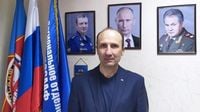On the banks of the River Don in southern Russia, the laughter and shouts of children mingled with the sharp commands of military instructors this August. But this was no ordinary summer camp. Instead, 83 children, some as young as eight, were crawling through sand, running in formation, and—remarkably—throwing hand grenades (albeit dummy ones) as part of a military-style “route march.” According to Reuters, these children, clad in camouflage and sometimes carrying real weapons, were participating in a program run by Cossacks in the Rostov region, close to the Ukrainian border, under the watchful eyes of soldiers who had fought in Ukraine.
This event is just one example of a growing trend across Russia and its occupied territories: the systematic militarization of youth. The goal, at least as Russian authorities see it, is to instill patriotism and prepare the next generation for potential military service. Critics, however, see something far more troubling—a campaign of indoctrination and propaganda, and, in the case of occupied regions like Crimea, actions that may even violate international law.
The Rostov route march was memorable for the children involved. Eight-year-old Ivan Glushchenko summed up the excitement, telling Reuters, “How we threw hand grenades and fired dummy shots.” For older participants like Anton, the motivation was clear: “Why I am here? It’s because I want to tie my future with military service. (I want) to serve my country and be loyal to my cause until the very end.” Another boy, David, said the challenge allowed him to test his own limits: “It allowed me to find out how strong my willpower is.”
Instructors, many of whom had seen combat themselves, emphasized the positive aspects of the training. Alexander Shopin, a wounded Russian soldier whose daughter took part, explained, “It’s not the first time I’ve taken part in this route march. I like it – to pass my experience to the children. You can see how a family is forged out of them.” Shopin added that his daughter enjoyed the challenge, especially the team spirit: “To run as part of a team and not to let her mates down – this is what she likes.” The camaraderie was palpable, with one teenage girl exclaiming, “I nearly died!” after the exercise, only for her friend to add, “We made the run three times!”
Instructor Vladimir Yanenko told Reuters that the children drew “understanding and knowledge” from the experience, and that “patriotic training is very important. They don’t want to hang out in back alleyways. It’s much more fun for them here.” Yet not everyone is convinced. The independent children’s rights organization “Ne Norma” described such programs as a form of indoctrination, pointing to the teaching of weapon handling and even military drone building in schools as evidence of a broader propaganda effort.
Russia is not alone in turning to youth militarization in the face of regional tensions. Across the border in Poland, the government has responded to the ongoing war in Ukraine by launching its own ambitious programs to boost military readiness. This summer, 10,000 young adults aged 18 to 35 signed up for Poland’s “Vacation with the Army” program. Over 27 days, participants received training in weapons use, navigation, first aid, radio communication, chemical defense, and tactics, as well as grenade and mine handling. The reward? Reservist status and a stipend of 6,000 zloty (about €1,400), according to official reports.
Poland, which ended conscription in 2010, now fields NATO’s largest army with 212,000 troops and spends a hefty 4.7% of GDP on defense. Prime Minister Donald Tusk is pushing to expand these voluntary programs to 100,000 recruits a year and eventually extend military training to all citizens. Since 2024, firearms training has even been mandatory in Polish schools. But Warsaw faces its own challenges: with a birth rate of just 1.09 children per woman, demographic decline threatens the long-term sustainability of these ambitious military recruitment goals.
Meanwhile, in Russian-occupied Crimea, the militarization of children has taken on even more controversial—and potentially criminal—dimensions. In August 2025, Ukrainian prosecutors announced that the head of the Crimean branch of the Russian DOSAAF (a paramilitary organization) would stand trial for promoting military service among civilians and children. The charges include violating the laws of war and justifying Russia’s armed aggression against Ukraine. The accused, who has led the Crimean DOSAAF since 2017, is alleged to have organized and disseminated propaganda for the Russian armed forces, including through pro-Russian media interviews in 2022 and 2023 that promoted the recruitment of Ukrainian children.
A forensic linguistic analysis confirmed that his statements contained clear signs of propaganda and justification for armed aggression, according to the Prosecutor’s Office of the Autonomous Republic of Crimea and the city of Sevastopol. The individual, identified in media reports as Andriy Popov, faces up to 12 years in prison if convicted. Notably, personal sanctions were imposed on him by Ukraine’s president in May 2025.
The situation in Crimea goes beyond one individual. According to a Suspilne investigation, organizations like the “Evpatorian Paratroopers” have been conducting systematic military training of children aged 7 to 17 at bases belonging to the Russian Black Sea Fleet. Activities range from shooting and field medicine to obstacle courses and simulated exercises with law enforcement. There are even plans for tank and mine-technical training. The aim, according to organizers, is to steer children toward military and government-affiliated educational institutions in Russia.
In 2023 and 2024, the “Evpatorian Paratroopers” ramped up their public presence, taking part in patriotic festivals, displaying Russian military equipment, and holding meetings with military and university representatives. Human rights advocates warn that such prolonged military training of children on military bases could constitute using civilians as human shields, a violation of international humanitarian law, and may amount to war crimes if enacted during armed conflict. Ukrainian authorities have opened a criminal case under Articles 438 (“war crimes”) and 169 of the Ukrainian Criminal Code, documenting the facts of military-patriotic education of children in Crimea. As of the latest reports, the suspects in this particular case have not yet been named.
What’s clear from both sides of the border is that the militarization of youth is no longer a fringe phenomenon—it’s a central element of state policy, justified by authorities as necessary for national security and resilience. Yet, as critics and human rights advocates point out, the long-term consequences for children and society may be profound, raising difficult questions about the balance between patriotism, security, and the rights of the next generation.


